In the Land of China White
By Stephen Brookes in Thailand, Hong Kong and Washington • Insight • February 5, 1990
______________________________________________________________________
Bangkok, Valentine's Day, 1988: The rains drenching this sprawling, Southeast Asian city were the worst anyone had seen in years. For more than a week the rain had come down in torrents, flooding Bangkok's twisting, junk-clogged canals and turning its crowded slums into miserable swamps. Traffic in the city, awful at its best, ground to a halt, and the outdoor markets shut down. At least, residents told themselves, the rains were doing one good thing: Layers of grime were washing off the magnificent mirror-clad temples, revealing again just how beautiful they were.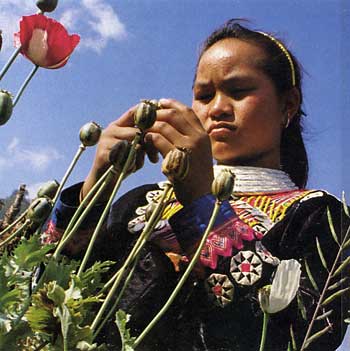
Opium poppies, Thailand B. CabeBut on the docks at Klong Toey port on the southern edge of the city, the rains were uncovering something else entirely. Workers loading a freighter bound for the United States noticed that, among hundreds of bales of sheet rubber that had been standing in the rain, whitish puddles were starting to form. Dockworkers alerted police, who ripped the bales apart and dug down to the source of the pale ooze: almost 2,400 pounds of pure China White heroin.
What the Thai police stumbled over that afternoon became the largest seizure of heroin yet uncovered anywhere in the world, and it launched investigators on a path that led to the arrests of more than, a dozen people and the discovery of a multibillion-dollar syndicate that stretched from the remote hills of northern Thailand to the money centers of Hong Kong and on to the streets of New York.
The deeper investigators dug, the more they found. The smugglers had managed, it was discovered, to bring almost 2 tons of heroin into the United States the year before and had been arranging yet another huge shipment as soon as the Klong Toey delivery reached its New York destination. The network of operatives involved was so vast and so intricate that two years later, several of its leaders are still being hunted down; the latest two came into the net in December.
The bust in Bangkok was only one of many signs in the past three years that massive amounts of heroin have been coming into the United States from Southeast Asia. As big as the Klong Toey gang was, say investigators, it was only one of dozens of complex, well-organized and hugely profitable heroin syndicates now in operation.
Together with thousands of small-time smugglers, they control a river of heroin that runs from the remote opium fields of Burma to secret heroin refineries along the Thai and Laotian borders, down back roads through Thailand to Bangkok, up to Hong Kong by ship and then on to the streets of Australia, Europe and North America. Huge amounts of highly refined Southeast Asian heroin, of far better quality than the impure, brownish heroin that comes from Mexico, Pakistan and Afghanistan, have been pouring into the drug markets of New York and Los Angeles since 1987, and more crosses the border every day.
It arrives in thousands of ways: hidden in crates of radios and tape recorders from Hong Kong factories; packaged inside lawn mower tires; "body-packed" by couriers who hide it under their clothes; even sewn inside dead goldfish. Supply has skyrocketed - heroin seizures have more than tripled since 1985 - and so has quality: What is sold on the street now is more than 40 percent pure, up from only about 8 percent just a few years ago.
So far, Washington's war on drugs has been aimed at the epidemic of crack cocaine that has swept the country since the mid-1980s. But a growing number of doctors, drug officials and politicians warn that an even greater threat from heroin is closing in fast. Significant heroin busts are made almost every week, with little evident effect on either price or supply. Last February, for example, the FBI was shocked to discover that the seizure of a $1 billion, 800-pound shipment -- enough to supply every addict in New York for a year -- had only a “negligible" effect on prices. "It told us that there's a lot more heroin out there than we know about,” said Dave Binney, the head of FBI drug investigations.
What has many drug enforcement and medical authorities worried is that the same factors that fueled the spread of crack easy availability and low price -- could set off a similar explosion in heroin use. And there is another factor: Unlike traditional addicts, few new users inject the drug. Instead they combine heroin with crack and smoke the mixture to get the effects of both drugs simultaneously, which leads, many fear, to a double addiction.
William Hopkins, director of Street Research in the New York state Division of Substance Abuse Services, has seen the future firsthand, and he's scared. He and his team of researchers go undercover for weeks at a time on the streets of New York, keeping track of which drugs are popular and how they are sold.
"We see more people selling heroin than ever before,” Hopkins told a hearing of the Senate Judiciary Committee last August. "Smoking heroin with crack has widely spread, and we believe it is growing. And growing rapidly."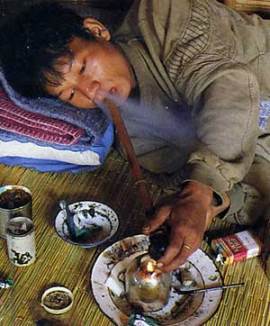
Opium smoker, Northern Thailand B. CabeSmoking heroin is not a new phenomenon. It’s been a favored method in Asia since the 1920s, and appears to be coming back in fashion because of the fear of spreading AIDS through shared needles. Instead of injecting the drug, a user simply spoons some onto a piece of tinfoil, holds a lighted match under it, and inhales the upward-curling smoke through a rolled-up bill. It's known as "chasing the dragon." Mixing heroin with cocaine has been around for a long time, too. Older addicts call it "speedballing" and say it smoothes the sometimes-edgy cocaine high. A crack high can be more of a roller coaster than highs from most drugs. Smoked in small, hard pellets called rocks, crack produces an intense but short-lived euphoria, followed by a depression so severe that it sometimes leads to suicide.
Therein lies the key to heroin's growing popularity. Sprinkling a bit onto crack can extend its effects for as much as an hour and can soften the crash that follows. Hopkins and others report that dealers, always on the lookout for new products, are now selling souped-up sandwiches of heroin and crack called "moon rock," "parachute rock" or "speedball rock" in small capsules for less than $15 each, a little more than the price of a similar amount of regular crack.
Buying heroin in America's biggest cities is almost as easy as buying aspirin. It is available in glassine envelopes, in short heat-sealed sections of ordinary drinking straws (known as HIS: heroin in a straw) or in vials. Business goes on around the clock, seven days a week, and is often better organized than many legal operations. Some dealers even pass out business cards, printed up with a street comer address and part of a phone number (to be filled in at the last minute). There are sale days and bargains and shopping malls, where a buyer can select whatever drug he wants. If that is too much trouble, home delivery can be arranged, the drugs brought by children on bicycles.
Dealers are said to be targeting users under the age of 22. Already hooked on crack, eager to try something new but unwilling to start using needles, younger users have few compunctions about starting in on heroin -- especially as the price comes down. No studies have been done on how long it takes to become addicted to heroin this way, but addiction appears to be inevitable. And that has enforcement officials concerned that a whole new generation of young, poor, poly-addicted users is emerging.
The people growing rich on this trade belong to international Chinese organized crime syndicates, many based in Hong Kong, which maintain connections in Chinese communities in cities from Bangkok to Los Angeles to Amsterdam. The highly refined heroin they supply, says the Drug Enforcement Administration, now accounts for more than 40 percent of the American market, up from 14 percent in 1985. And the profits they make are huge. In its final form, adulterated and having been passed through many hands, a kilo can bring $1 million to $5 million on the streets of New York. The opium from which it was made, meanwhile, had been bought for just a few hundred dollars from a farmer in the highlands of Southeast Asia.
The emergence of the so-called Chinese connection has been partly due to the prosecutions in recent years of leaders of the big Italian organized crime syndicates, which traditionally ran the heroin trade from Southwest Asia into the United States. Chinese networks, which had previously supplied relatively small amounts of heroin, were quick to step into the void.
But the trade also has blossomed from nearly a full decade of bumper opium crops in the fertile regions of Burma, Laos and Thailand, the countries of Asia's Golden Triangle. Burma has emerged as the world's biggest supplier, and the amounts being grown there are staggering: Drug enforcement experts in Bangkok estimate the 1990 opium poppy crop to be about 2,600 metric tons, up from about 1,300 in 1989. An additional 350 tons are being produced in Laos, and as many as 50 tons will be grown this year in Thailand.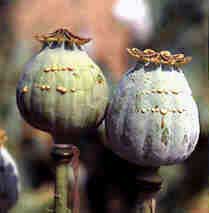 The heroin trail starts in thousands of small fields in the remote mountains where the opium poppy, Papaver somniferum, thrives in the alkaline soil. Poppies are by far the largest crop for most of the Burmese hill people. By some estimates, as much as 90 percent of the cultivated land in the northeastern pail of the country is given over to them, and some 290,000 acres are thought to be under cultivation.
The heroin trail starts in thousands of small fields in the remote mountains where the opium poppy, Papaver somniferum, thrives in the alkaline soil. Poppies are by far the largest crop for most of the Burmese hill people. By some estimates, as much as 90 percent of the cultivated land in the northeastern pail of the country is given over to them, and some 290,000 acres are thought to be under cultivation.
Tens of thousands of people are involved in growing, refining and transporting the drug, and tens of thousands more profit indirectly from the money that the opium trade brings in. In many areas, it is the only crop that makes economic sense. It takes about 2,000 poppies to produce a kilo of opium, but once grown, the valuable crop is inexpensively transported by mule through the hills.
The crop is sown in the late fall and is usually harvested about three months later, soon after the plants' white and purple petals have fallen off. The small, green seed capsule that remains is slit several times with a sharp, curved knife, and almost immediately a whitish sap begins to ooze out of the wound. Overnight, the sap dries into a dark brown gum, opium.
Some of the harvest is smoked by the villagers themselves, mostly older people, who roll a bit into a small ball and put it on a pin, holding it over a flame until it starts to smoke, then dropping it into an opium pipe. But most of the crop is wrapped in banana leaves and carried by mule to hillside refineries in the border areas, to be turned first into morphine, then into heroin.
The processing is done in small, makeshift labs, often manned just by a chemist, a few assistants and a contingent of guards; all that is really needed is a water source. In some areas, established refineries have been running for years, hidden under a cloak of camouflage netting and often surrounded by mine fields. All are well-protected, both from authorities and from competing traffickers; in Burma, a few are even reputed to have antiaircraft guns.
The initial refining step is quite simple, even crude: The opium is dissolved in hot water and mixed with lime fertilizer, which separates the morphine from the rest of the opium chemicals. Filtered, solidified with ammonia and then dried, the resulting powdered morphine has been reduced to one-tenth the weight of the opium.
But then the process gets much more delicate. Equal portions of morphine and acetic acid must be heated together for six hours at a precise temperature, binding the two chemicals into an impure form of heroin that is more than twice as strong as e original morphine. The brownish powder, when dried, is purified several times with ether and hydrochloric acid. The final product -- a fine, almost fluffy powder called diacetyl morphine -- is China White.
Once dried, the heroin is measured into 700-gram units and wrapped in paper or put into plastic bags, each stamped with an identifying logo. Brand names are important: One of the most famous is called Double UO Globe, made in Laos, which pictures two lions holding a globe in their paws. There are dozens of others, mostly from Burmese refineries; Crouching Lion, Lucky Strike, Panda and Dragon are a few. Each has its own reputation for quality.
With dozens of refineries now in operation, the stream of heroin out of Burma has turned into a flood, and the government in Rangoon appears unable, or unwilling, to do anything about it. That has partly been due to the political instability that has dominated the capital since the riots and subsequent military takeover in 1988. With a restless population and some 20 insurgency movements in the border regions, the military has been hard-pressed to devote the few resources it has to fighting a drug war.
For most of the past four decades, in fact, Rangoon has been trying to get full control of the northern and eastern provinces where the traffic flourishes. Ethnic minorities make up about 30 percent of Burma's population, and groups like the Kachin, the Karen, the Arakanese, the Shan and others have long insisted on regional autonomy, even independence. Most of them maintain their own armies, sometimes numbering thousands of troops. Heavily armed and fiercely independent, often under the leadership of a charismatic warlord, groups such as the Kachin Independence Army, the Wa National Army, the Pa-0 National Liberation Army, the Karen National Liberation Army and dozens of others roam with little interference from the government.
The funding to keep the regional armies going comes almost entirely from smuggling, say Thai authorities. Teak, gold, jade and antiquities are all taken over the border into Thailand. But the big money-maker for all of them (with the exception of the Karen, a uniquely anti-drug group) is heroin. "They all claim they're fighting for their independence," scoffs Lt. Gen. Chavolit Yodmani, head of Thailand's Office of the Narcotics Control Board and the director of his country's war against drugs. "I don't believe it. Many of them are just drug trafficking organizations."
As much as 90 percent of the heroin from Burma is said to be under the control of a single opium warlord: an enigmatic, notorious figure who operates under the nom de guerre of Khun Sa. Born Chang Chi-fu in 1934, Khun Sa heads the Shan United Army, a heavily armed force of 5,000-6,000 that controls a 200-kilometer stretch of the Burmese-Thai border where most of the refineries are located. Kicked out of Thailand in 1982, he now operates out of a fortified headquarters in the Doi Lang mountain range only a few kilometers inside Burma.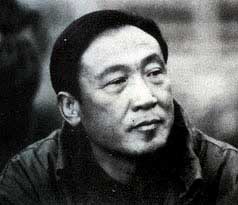
Khun SaWhile Khun Sa admits to being involved in the drug trade -- and has even boasted about it in the Asian press - he insists that he is the leader of a nationalist movement and the recognized chief of the 8 million Shan people. Claiming only to tax the opium that passes through his territory so that he can feed his people, Khun Sa has offered several times to abandon the drug trade if the United States will pay him $ 100 million a year for six years.
He has found an unusual defender in Abbot Phra Chamrdon Parnchant, a Buddhist who heads a drug rehabilitation program near Bangkok. "Khun Sa does not want to be recognized as a drug dealer," he says. "He says he only collects taxes, and I believe him. " A heavyset man with a penetrating stare, tinted glasses and two gold Cross pens tucked into the folds of his brown robes, the abbot was asked by Khun Sa several years ago to serve as his spokesman. After meeting briefly with Henry Kissinger in 1987, he has been trying, without success, to get the White House to discuss a deal with Khun Sa.
For their part, both Washington and Bangkok continue to regard Khun Sa as a criminal and the Shan United Army as his personal bodyguard and trafficking force.
"The guy's a drug dealer," says a Western drug official in Bangkok. "And he's stronger now than he's been in a long, long time. He's just sitting up there in his own little fiefdom." The Thai government has put a $25,000 price on his head, but there is little that Bangkok can do as long as he stays in Burma. "If he comes into Thailand," vows Chavolit, "we'll grab him."
Unless, that is, his enemies get him first. Some of the armed groups in northern Burma, such as the Kachin Independence Army and the Shan State Army, are occupied with smuggling heroin north into India and rarely clash with Khun Sa. But there is almost constant skirmishing in the hotly contested areas along the eastern border with Thailand, where a half-dozen groups are vying for the heroin trade.
"It's a kaleidoscope up there," says the Western drug official. "Alliances are constantly shifting among the groups. Some that used to fight now are working together. It's a business. And business is business."
Among Khun Sa's most bitter competitors, Thai observers say, is the Wa National Army, another self-styled independence movement heavily involved in drugs. It has become stronger in recent months since teaming up with the Burmese Communist Party, which under the leadership of Taik Aun is thought to control many of the opium growing areas. (The party has also reportedly enjoyed close ties with China, which it has used as a source for heroin refining chemicals.) Conflicts between the WNA and the Shan United Army have been heating up since fall, often spilling violently over the border into Thailand. (Bangkok sent police reinforcements into the village of Ban Arunothai in early December after fighting broke out between the two groups, each of which accused the townspeople of helping the other.)
While Khun Sa and his army appear to have a firm grip on refining and trafficking opium, Thai authorities say much of the cultivation is under the control of the 3rd and 5th Chinese Irregular Force, headed by Gen. Lee Wan Huan. Numbering fewer than 2,000 troops, the CIF is a descendant of a force of nationalist Kuomintang troops driven out of China and into the Burmese border area after the communist takeover in 1949. Turning to the heroin trade to finance several aborted invasions of China in the early 1950s, the Kuomintang troops gradually degenerated into full-time traffickers. They were the ones who centralized the opium marketing structure (forcing hill tribes to pay an annual opium tax), set up trading routes over the border into northern Thailand and imported chemists from Hong Kong to set up refineries. By the late 1960s, they were producing heroin in the jungle that was almost 99 percent pure.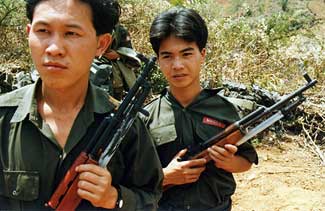
Militia fighters in Burma's Shan State Stephen BrookesPerhaps Khun Sa's most dangerous enemy -- and a major player in the complex and delicate politics of northeastern Burma -- is the 5,000-man Karen National Union, led by Gen. Bo Mya. A genuine independence movement, the KNU is fiercely opposed to drug trafficking -- any of its soldiers who get involved with drugs face a death penalty -- in part because it depends for much of its funding on outside Christian organizations.
But the group also taxes shipments of jade, tungsten and tin that pass through the 800-kilometer-long region it controls, and its troops are heavily armed. Six Karen were arrested on the Thai border in December with hundreds of AK-47s, M-16s, mortar shells and grenade launchers, as well as more than 20,000 rounds of ammunition.
Unable to deal with both narcotics traffickers and antigovernment insurgents like the Karen and the Burmese Communists, Rangoon has been focusing on the insurgents -- to the point that many believe it is now in bed with Khun Sa. In 1988, the Bangkok press reported that Rangoon had cut a deal with the drug lord, giving him free rein along the border in exchange for protection for teak exports (on which the government depends for foreign currency).
Since then, government checkpoints have been relaxed and troops withdrawn from many of the drug trafficking areas. And in March 1984, the Thai press reported that a secret meeting had taken place between Khun Sa and Brig. Gen. Aye San, the head of Burma's Eastern Military Command. The Burmese official agreed to leave Khun Sa alone if he would use his forces against the Karen insurgents and the Burmese Communists. "It's become live and let live with Khun Sa, so the Burmese government can concentrate on the fight with the Karen," says the Western official in Bangkok.
Washington also has long suspected that much of the equipment it has provided to fight opium production, notably helicopters and transport aircraft, has been diverted to the military's anti-insurgency drive. Because of these concerns and in protest against the military's brutal suppression of the 1988 uprising, in which hundreds died, Washington cut $14 million in annual aid last year and refused to recertify Burma as cooperating with antidrug activities. (Decertification means a country is automatically disqualified from receiving direct bilateral aid and requires the United States to vote against it in such multilateral organizations as the World Bank.)
The aid was not doing much good anyway. Many top Burmese police officials, including the head of the narcotics suppression unit, lost their jobs after the military takeover in 1988, and the few antidrug forces left in the country are understaffed, poorly trained and badly equipped. At the height of its efforts a few years ago, the government had five aircraft in its opium eradication squadron: slow, prop-driven Thrushes that could not go into insurgent-controlled areas without risking being shot down. In their best year, the planes sprayed 31,000 acres, about 10 percent of those under cultivation, and there was no eradication effort at all last year. Each year from 1984 to 1987, according to a recent U.S. General Accounting Office report, the Burmese seized an average of 1.5 metric tons of opium, less than one percent of the crop. The effect on traffic was "negligible."
Rangoon has tried halfheartedly to defend itself; the state organ Working People's Daily claimed in August that Burma had kept $16.5 billion in heroin from reaching world markets. But the government's usual attitude has been benign neglect; the Working People's Daily observed in 1988 that "opium from the Golden Triangle will spread throughout the world. For Burma, it is not our business what happens once it gets out. We can only look on with folded arms." With that kind of attitude among top brass, the country's opium problem is likely to become increasingly intractable.
Bad as it is there, Burma is not the only source of high-grade heroin. Some 300 metric tons of opium has been coming out of the and plateaus of northern Laos at least since 1987, aided, Thai and Western officials say, by top figures in the Marxist government of Prime Minister Kaysone Phornivane. Bangkok officially accused Vientiane of being involved in trafficking in 1987, and the State Department says dryly that the United States "continues to receive reports of the involvement of senior Lao officials in the narcotics trade."
Khun Sa himself is widely reported to enjoy close personal and professional ties with the prime minister and to have moved a number of his refineries into Laos's northern Sayaboury province near some of his Burmese operations. "Two years ago, Khun Sa formed an alliance with Kaysone in Laos," says Francis W. Belanger, the author of "Drugs, the United States, and Khun Sa." Belanger, who met with Khun Sa early in 1989, says flatly that the Burmese drug lord "now has refineries in Laos and can produce his heroin without any outside interference. And if things go to hell in Burma in the next year or two, he can move into Laos and continue his operations there."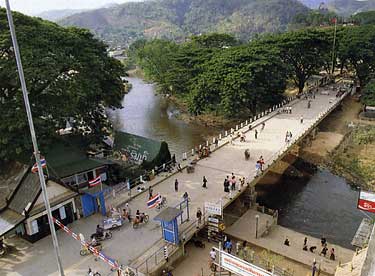
The Thai-Burmese border, Mae Sai B. CabeLaos would be difficult to patrol even if the government were really trying. Like Burma, vast stretches of it are virtually inaccessible. Narrow mule trails and waterways take the place of roads. The economy is in a semi-permanent shambles, making the opium and marijuana trade often the only way for poor villagers to survive. Provincial officials, who rule with a fair degree of autonomy from Vientiane, also depend on the trade: Two Laotian smugglers arrested in Bangkok last May told police they had paid local Lao officials about $2,000 per kilo to ensure safe passage out of the country.
Much of the Laotian heroin is simply ferried across the Mekong River into Thailand late at night at dozens of anonymous crossing points, then funneled into the town of Ban Houai Sai, long notorious to Thai police as a major trading center. But as surveillance has picked up all over Thailand, a new route has reportedly opened up out of central Laos: Multiple shipments are said to be going east down Highway 13 out the Vietnamese port of Da Nang.
Washington has had little luck enlisting Vientiane in the war on drugs. It offered to fund a crop substitution and narcotics control program in 1987 but was met with mostly blank looks, and Laos was taken off the U.S. aid list last year. Things may or may not be changing: Laos has reportedly started a $5.8 million U.N. plan to eradicate the poppy, though the State Department reports "no known poppy eradication" in the 1988-89 growing season. Vientiane is said by Western officials to be eager to get back on the aid list.
The third comer of the Golden Triangle, Thailand, has been much more successful in attacking trafficking. About 50 tons of opium are still being produced each year in the highlands around Chiang Mai and Chiang Rai, in the remote northern stretches of the country.
Bangkok has been aggressive in trying to wipe out the remaining poppy fields and in getting its hill tribes out of the business. Nine different "crop cultivation control" programs have been started in more than 600 villages, and a slow but apparently steady transition is being made away from the poppy crop and into the less lucrative but much safer ones of coffee, lettuce and kidney beans.
Thai authorities have also been trying to crack down on the refineries still operating along the borders. The surge in opium production in Burma, says the State Department, has led to a corresponding rise in refineries in Thailand. And while Thai authorities have managed to smash dozens in the past decade -- nine last year -- and claim to have cut production by 70 percent, the country still harbors a substantial refining and smuggling network.
Even if it can wipe out its remaining poppy fields and refineries, Thailand faces a struggle against smugglers from Burma and Laos. "Thailand is a natural funnel for both heroin and marijuana," says the Western official. "And it's growing. We used to see shipments of 30 or 40 kilos that we thought were big. Now, with the booming economy and the growth in exports, we're seeing shipments of hundreds of kilos."
Getting the heroin into Thailand is no big trick. Most of it is brought over on narrow mule trails at dozens of points in the hills, then gets trucked into small western towns like Mae Hong Son to be sold to middlemen. Some comes over the bridge farther north at Mae Sai, a dusty, beat-up border town that was sacked a decade ago by Khun Sa in one of the city's periodic drug shoot-outs. Mae Sai is the northernmost point of Thailand, and you can pick up Highway I there way down to Chiang Mai, Bangkok and the coast. But even here the border barely exists: Thais and Burmese can cross freely 5 kilometers into each other's country to trade (there is a thriving black market in gold and jade, as well), and the bridge is always jammed with trucks, foot traffic, overloaded bicycles and motorcycles. A handful of border guards, machine guns slung casually under their arms, watch the crowd without much interest. After all, anyone with anything to hide would merely wade across the shallow river a mile or two downstream.
There is an array of Thai forces on the border, including the Border Patrol Police, the Thai 3rd Army, the provincial police and agents from the Office of the Narcotics Control Board. They are supplemented by DEA agents, who have three offices in Thailand, and Interpol. "We've got thousands of people up there,” says Chavolit.
Nevertheless, the border remains porous, and efforts to control the trade sometimes backfire. A strategic road built by the Thais on the Burmese border near Mae Hong Son in the early 1980s was quickly appropriated by Khun Sa, who established three refineries just over the border and used the road to move heroin into Thailand. When Thai officials responded by destroying a 5-kilometer section of the road, the trafficker brought in tractors and earthmoving machinery and rebuilt it. And when one of his men was killed by a mine planted by the Thai border police last April, Khun Sa reportedly moved in 100 men to guard the road. At last report, they were still in the area.
Once inside Thailand, the heroin usually makes its way to either Chiang Mai or Chiang Rai, where officials say the big deals are made, then down to Bangkok or one of the port cities farther down the coast for shipment out of the country. In these towns, a 700-gm bag of quality heroin will run $3,000 to $4,000, and there are big profits for the middlemen who arrange to transport it to Bangkok, where it will fetch 50 percent more than in the north. These middlemen tend to be Chinese Haw: Thais of Chinese descent who are known by Thai names but maintain close contacts with other Chinese in Yunnan province in the People's Republic and in Hong Kong. Some are involved in production: Police in Mae Sai reported in October that Haw merchants were known to be running refineries just over the border in Burma. But most are in the transit business, recruiting couriers to move the drugs south.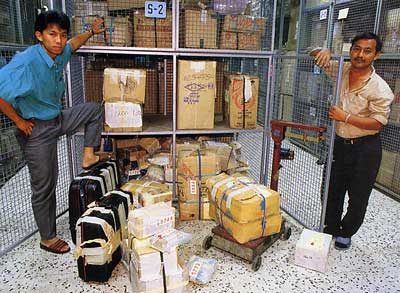
Thai police with seized heroinThe couriers could be anyone. Some are Haw themselves, and others are drivers who never know what they are carrying. Some are just people who need a little quick cash: Four women were arrested last June near Chiang Mai when a spot police check uncovered 9.2 kilos of high-grade heroin hidden in girdles designed to make them look pregnant. Profits, in a poor country like Thailand, can be huge. A Haw arrested with 34 kilos as he approached Bangkok in December said he was paid about $8,000 to transport the drug, apparently destined for the Netherlands.
Once in Bangkok, some of the heroin passes into the hands of the city's underworld distribution network. There are about 300,000 addicts in Thailand, more than half of them in the sprawling slums of Bangkok, where heroin is sold a gram at a time in brightly colored paper packages.
But most of what comes into the capital city is quickly exported: mostly to the United States, followed by Hong Kong, Malaysia, the Netherlands and Singapore. Huge amounts leave the country in tiny shipments, either mailed - more than 32 kilos was intercepted in the Bangkok postal system in 1988 - or body-packed out by individual couriers (known to Asians as "ant traffickers") on commercial airlines.
Most large shipments go by freighter. Heroin has been found in plaster Buddhas, in crates of fake jade, even dissolved in fish sauce. While Bangkok's Klong Toey port is still the most important exit point, says the Office of the Narcotics Control Board, increased police surveillance there has pushed some of the smuggling down to little-watched port towns in the southern and eastern provinces. Officials in Bangkok say increasing amounts are being transshipped through Laos to Da Nang, then over to Canada.
As frequently as not, the smugglers are foreigners. About 500 foreigners are in jail in Bangkok on drug charges, most of them Burmese, Chinese, Laotian or Malaysian. Fifteen Hong Kong smugglers were caught in 1988 (with more than half of all the heroin that authorities seized that year), as were 15 Americans and a handful of Middle Easterners and Europeans.
A more recent phenomenon has been the emergence of the so-called ‘African connection.’ European traffickers have been recruiting couriers in poor Sub-Saharan countries, especially Nigeria, and using them to transport heroin out of both Bangkok and the Southwest Asian producing countries, routing them via India, Sri Lanka, Kenya, Nigeria or other countries before going on to New York or European capitals. Some 236 Africans were arrested worldwide in 1988 for heroin smuggling, and Bangkok experienced a mini-epidemic this fall: A Nigerian woman was arrested with 58 kilos of heroin at Bangkok's Don Muang International Airport Oct. 16; two were arrested the next week trying to ship out five televisions packed with more than 20 kilos; another was busted Nov. 23 with about 40 kilos.
For those who get caught, the penalties are tough: Anyone convicted of producing or exporting heroin faces a potential death sentence. Thailand seems to be getting increasingly serious about the drug problem. More than 51,000 were arrested in 1988, up from slightly more than 33,000 in 1986, and police crackdowns are ordered periodically; the most recent was in June. But Thailand lacks any kind of conspiracy law, so it can convict only traffickers it catches with drugs. That means that mostly little fish get caught. "We need to go a step beyond getting the couriers, who aren't so important," says Chavolit. "The big guys won't do it themselves ' "
To close the net around the kingpins, Bangkok is considering a bill that would allow authorities to seize traffickers' assets and to triple penalties if the trafficking is done by government officials. If passed, that provision could make a crucial difference. Corruption is almost a way of life in Thailand, say those who live and work there; it extends from the local cop to the highest levels of the military.
Things are changing, slowly. On Dec. 12, a Thai police investigatory committee accused former police Maj. Gen. Veth Petbarom of being involved in shipping heroin to five countries, including the United States. Veth, indicted in New York on trafficking charges last July, reportedly used his influence to get the drugs through customs checks at Don Muang. "We have to be careful," says Chavolit. "Cases of corruption can take place anywhere, "
Much of the heroin leaving the Golden Triangle goes to Hong Kong, which has emerged as a key base of operations for financiers and traffickers. Situated along China's southeastern coast, Hong Kong has the biggest container port in the world and is one of Asia's foremost banking centers, handling some $50 billion a day. Most of the "Chinese Mafia" organized crime groups involved in the drug trade run the actual smuggling networks and launder profits from there, according to the DEA.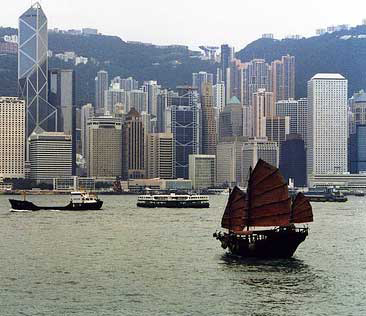
Hong Kong harbourThe trade has been going on since the 1920s, and the networks have become deeply entrenched. "The proximity to the source countries, the historical connections to Chinese communities elsewhere and the fact that we have very advanced communications and transport links with the rest of the world have given Hong Kong a long history of drug trafficking," says Tsang Yun-pui, chief staff officer of the Royal Hong Kong Police's Narcotics Bureau.
With 200 islands, most of them uninhabited, and hundreds of miles of coastline, it is easy for a trawler to anchor, bury a shipment on the beach and return to Thailand. Sometimes heroin will be dropped off the boat with a floating marker at a prearranged spot, and another boat will zip out from the shore to pick it up. Others drag it underwater in sealed drums; if intercepted by Hong Kong police, they simply cut the cables and let the evidence sink.
That route is still strong, but Hong Kong police say that an increasing amount is coming in through routes that have opened up in recent years. Opium addiction, once a massive problem in China, was wiped out after the communists took power and began executing traffickers. But as the country's economy opened up to the outside world during the 1980s, the heroin trade came back to life. "All the previously used drug trafficking routes from the Golden Triangle through China to Hong Kong have been reestablished,” says Tsang.
From refineries in Burma and Laos, the usual China route extends to Kunming, the capital of Yunnan, where a healthy black market exists, then goes overland to coastal cities like Canton (Guangzhou) and Shanghai. "I estimate that between 30 percent and 50 percent of the heroin is coming in from China," says David Tong, director of narcotics investigations for the Hong Kong Customs Service. "Hong Kong traffickers go down to Yunnan to buy the heroin or to the black markets right over the border in Guangzhou or Shenzhen."
They appear to be setting up networks within the People's Republic: Last year a Hong Kong resident was executed after being convicted of recruiting three Chinese couriers.
With the enormous volume of commerce across the border, intercepting the traffic is almost impossible. Some 12,000 vehicles cross every day, and thousands of commercial and fishing boats sail in and out of Hong Kong every day. "Look at this coastline," says Tong, running his hand over the huge, minutely detailed map of the colony that covers an entire wall of his office. "They could come in here or over here or down here. Almost anywhere."
Officials in the colony say the market has been changing as well. Most of the heroin entering the local market for the past few decades has been a rough, brownish, impure form known as No. 3, which Hong Kong addicts smoke. Now, the purer form known as No. 4 or China White, favored by American and European addicts, has apparently taken over, and the price has dropped as well, from $20,000 a kilo in 1987 to about $11,000 today. "In the last 18 months, the market has changed completely," says James Harris, a DEA agent in Hong Kong. "It's all No. 4 heroin now. So everybody who's in the drug business is potentially an exporter. And we're seeing a lot more local dealers crossing over and going into the international market."
Can the heroin tide out of Asia be stopped? So much has been produced that Asian drug officials say huge amounts are now just being warehoused. Even if every poppy plant in the world were chopped down tomorrow, they say, the market could still be fed for more than a year. That kind of oversupply, they say, will inevitably push prices down, and once that happens a real heroin epidemic could spread.
Sometimes even the people fighting the war wonder if it can ever be won. "What are you going to do?" asks Harris, looking out over Hong Kong's teeming streets and the harbor beyond. "Every time you take out somebody big, there's somebody else ready to step right in."
References (19)
-
 Response: Текст песниBob Marley
Response: Текст песниBob Marley -
 Response: Best Zero Turn Mowers
Response: Best Zero Turn Mowers -
 Response: หมึกพิมพ์ริบบอนRibbons for sell, Contact 0935824515
Response: หมึกพิมพ์ริบบอนRibbons for sell, Contact 0935824515 -
 Response: หมึกพิมพ์ริบบอนFind, High Quality Ribbons from a Reputed Thai Company called ks barcode, Contact (0935824515)
Response: หมึกพิมพ์ริบบอนFind, High Quality Ribbons from a Reputed Thai Company called ks barcode, Contact (0935824515) -
 Response: Good Morning Quotes for Valentine's DayFind the Best Good Morning Happy Valentines Day Quotes Pictures, Images, Wishes, Greetings & GIF here. Share Good Morning Valentine's Day photos on Facebook, Tumblr, Pinterest, Twitter etc!
Response: Good Morning Quotes for Valentine's DayFind the Best Good Morning Happy Valentines Day Quotes Pictures, Images, Wishes, Greetings & GIF here. Share Good Morning Valentine's Day photos on Facebook, Tumblr, Pinterest, Twitter etc! -
 Response: Specialist VisitIf you urgent need in Specialist Visit.
Response: Specialist VisitIf you urgent need in Specialist Visit. -
 Response: Export Import Data
Response: Export Import Data -
 Response: Export Data
Response: Export Data -
 Response: Read A great deal morestephen brookes - international - In the Land of China White
Response: Read A great deal morestephen brookes - international - In the Land of China White -
 Response: from the Docker blogstephen brookes - international - In the Land of China White
Response: from the Docker blogstephen brookes - international - In the Land of China White -
 Response: What is ricestephen brookes - international - In the Land of China White
Response: What is ricestephen brookes - international - In the Land of China White -
 Response: What is ricestephen brookes - international - In the Land of China White
Response: What is ricestephen brookes - international - In the Land of China White -
 Response: What is ricestephen brookes - international - In the Land of China White
Response: What is ricestephen brookes - international - In the Land of China White -
 Response: What is ricestephen brookes - international - In the Land of China White
Response: What is ricestephen brookes - international - In the Land of China White -
 stephen brookes - international - In the Land of China White
stephen brookes - international - In the Land of China White -
 Response: click through the following websitestephen brookes - international - In the Land of China White
Response: click through the following websitestephen brookes - international - In the Land of China White -
 stephen brookes - international - In the Land of China White
stephen brookes - international - In the Land of China White -
 Response: visit our websitestephen brookes - international - In the Land of China White
Response: visit our websitestephen brookes - international - In the Land of China White -
 Response: health foodstephen brookes - international - In the Land of China White
Response: health foodstephen brookes - international - In the Land of China White

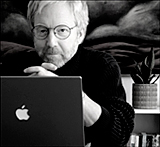
Reader Comments (1)